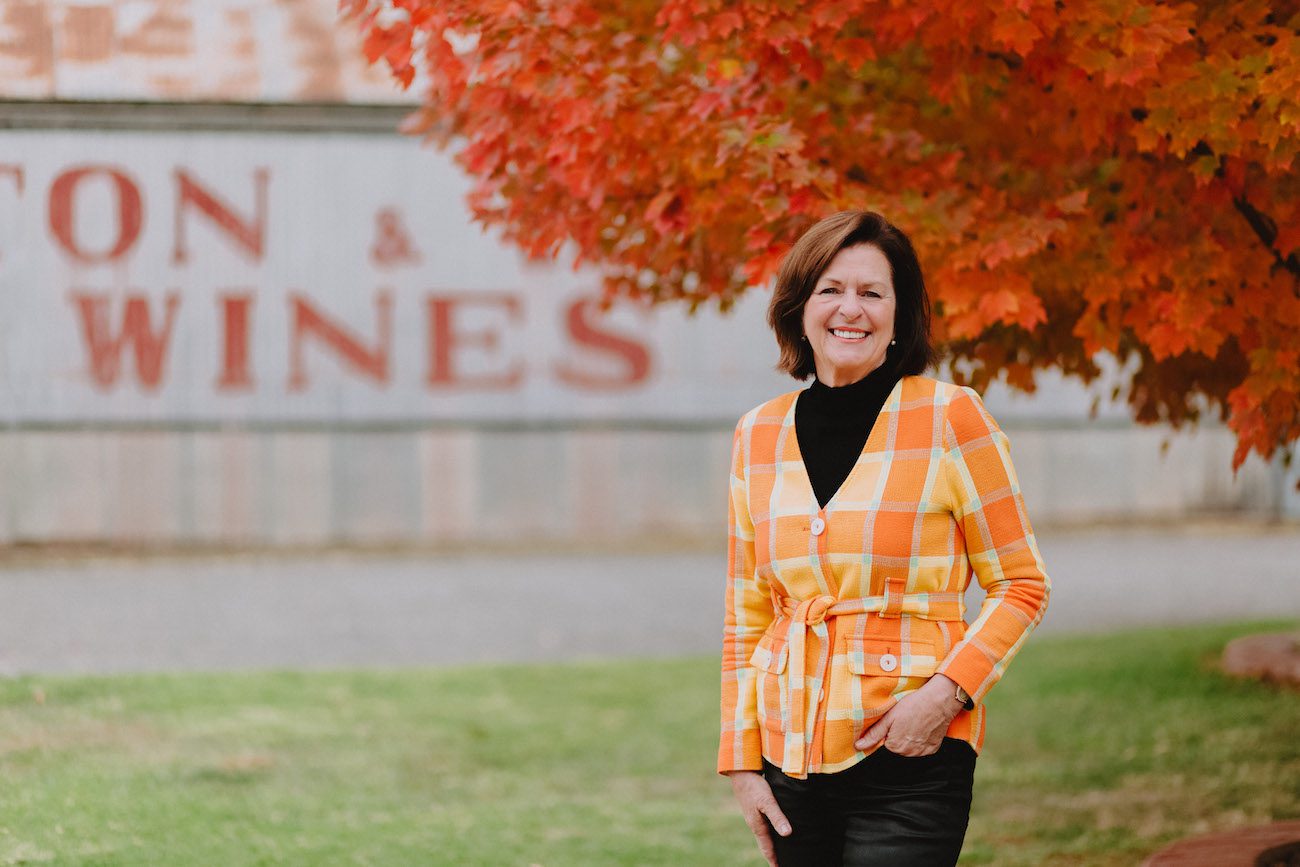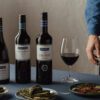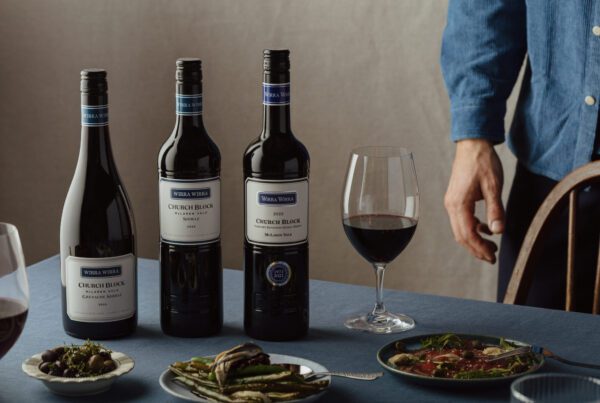
So, where do we go from here as an industry? Wendy Killeen of Stanton & Killeen shares her plans for the direction of the family business as well as some observations about the future of Australian wine in the face of numerous challenges.
The structure of the industry is an interesting one. I don’t envy those in the top positions of the peak bodies.
The majority of wine production and 70 percent of the levies comes from the inland areas, yet the long tail of brands and businesses in Australia are in the small to medium category, often privately owned and a fully integrated model (vineyards, winery and sales).
We’re pitching overseas ‘premium, small, connection-to-the-land Australia’ but the reality is far more complicated.
There are competing interests and ultimately, there will be conflict on where the focus is and who gets the most support. It’s good to see that many of the boards and committees have multiple representatives from the small, medium and large categories.
Losing the China market and the ‘perfect storm’ of internal and external pressures over the last two years has been a watershed moment for the industry – it’s vital that we find common ground and widely-approved compromises if there are to be major structural changes or a change in focus.
There needs to be a greater appreciation of the urgency of incorporating sustainability practices within our businesses.
There is a lot of energy and willingness, but at this stage, the actual uptake and pace of change is too slow.
The message I got at the Tech Conference, especially on the final day, was ‘get on the bus or get out’ – the 2025 Conference will be very interesting.
In the three years between now and then, we will probably see structural changes to the industry and further pressures to genuinely engage with ESG. It will become a case of ‘do you or don’t you?’, not ‘would you like to?’ and the sooner managers and leaders embrace this, the better the Australian wine industry will be positioned.
The other major concern for the industry is the increasing power and consolidation of brands and assets to the chains.
We need to protect our rights as producers and not be bullied into obliterating our margins.
That is a common complaint I hear across many levels of industry, including other distributors and retailers.
The wine industry is not alone in this; maybe we can look to other primary producing industries and see what framework can satisfy both the seller and the buyer?
It’s a sizeable problem that seems to be becoming increasingly in the favour of the major retailers to the point of no return.
Our loyalty to each other as Australian wine producers needs to continue. Even though there is a range of business models from large corporates to small family owned, we need to remember that we’re all in this together and a rising tide lifts all boats.
It’s one of the reasons Natasha and I love being in Rutherglen: the camaraderie makes it enjoyable to be in the Australian wine industry.
We need to continue to present Brand Australia as a unified group to our export markets and affiliates.
There’s no doubt it’s a challenging time but as a unified group, we need to keep adapting and stay positive.
I remember at the Outlook Conference in 2014, there was a lot of doom and gloom – we were being urged to ‘wear out our boot leather’ and hustle harder.
Ultimately the wine industry will keep having these boom-and-bust cycles into the future; it’s the nature of the beast. We can only be optimistic and work through the triumphs and challenges as they present.
As a 147-year-old winery spanning seven generations, we have no intention of thinking anything other than we have a positive future.
We have a strong brand and have been through extraordinary times over our long history, ensuring that we can look back and say, “well, this is hard, but remember how we made it through the last rough patch? That was harder!”
Constantly surviving and adapting is exhausting, but it builds confidence. The work we have put into the business in the past few years has set us up to continue through the next decade, but of course, every day we learn something new.
The most constant and daily threat is the rising costs involved with growing fruit, processing, packaging, employment, supply chain delays and selling the final product, wine. It’s the same story for most businesses in most industries.
The costs of employment are rapidly increasing but more concerning is the lack of a skilled workforce.
Where are all our marketers, winemakers and viticultural talent? As an industry we need to work really hard at attracting the next crop of people into the wine industry workforce including hospitality and tourism.
Our businesses can have a clear vision and customer demand, but if we are all competing for the same small pool of trained people, we aren’t going to be able to grow and thrive. Not only should this promotion come from the top, but also from a grassroots level – how can our regional and state bodies, like Wine Victoria and Winemakers of Rutherglen, start attracting and promoting the wine industry as an amazing career and worthy of attention?
As a business in regional Victoria, our challenge is to attract people to venture further than one hour from the capital cities. We’re looking at ways to engage local training providers and potentially offer internships.
The other threat is the ‘new drinks revolution’ where wine isn’t King (or Queen).
Our competition is no longer just wine, it’s alcohol across all of the drinks categories.
We’re in the age of the creative artisan making all sorts of interesting and sometimes, mind-boggling drinks. As I write this, I am in the UK working in the trade. Stanton & Killeen is fortunate to have an awesome distributor (ABS Wine Agencies) and I have been travelling across parts of Britain showcasing our products.
What I see are walls of gin, craft beer, whisky and new RTDs. Competition on every corner.
Many of us need a point of difference in this wine world and I think S&K have found it over two levels – our fortifieds and Portuguese varieties with several ‘new’ projects in the pipeline.
Fortifieds were once considered on the decline but the explosion of the interest in other alcohol categories means we have found some niche opportunities for us to explore. Watch this space.
The opportunities are boundless. We have all had time to review our past practices and reset. We now see new export opportunities, new consumer expectations, including experiences at the winery, along with new marketing opportunities.
Dare I say, new products. We are all at the beginning of a new era in wine opportunities.
Agritourism is one opportunity that we are very excited about.
We have seen a huge growth in interest in visiting regional areas, becoming better connected with the product, participating in memorable experiences and enjoying our beautiful spaces with friends and family.
Wineries are very well positioned to adapt and grow with this trend. We have witnessed Rutherglen improve considerably over the last 18 months, especially from an energy and investment in businesses including accommodation, excellent dining, retail and tourism experience offerings.
S&K is managing well through these uncertain and challenging times.
We have an excellent team with a collaborative and can-do culture.
Over the past five years we have constantly reviewed our operating practices and procedures, looked at how we interpret situations, and have made major changes across the entire business.
Sustainability and adapting to climate change is a key focus; it is significantly shaping how we make decisions and how we spend our capital.
The onset of the pandemic was a shock when our revenue halved almost overnight; around 20 percent from China and 30 percent from no cellar door sales.
With the help of our team and our business mentor, we methodically worked through the business, finding the opportunities and where the hidden value lay undiscovered.
Government support in 2020 was a lifesaver but we had to survive on the strength of the business and brand in 2021.
Financially it’s been a difficult journey due to smoke taint, implications of the pandemic, loss of our China market and the dramatic rising costs across the entire business from vine to table.
However, our family and business history has taught us that we must diversify and maintain integrity in the core of the business to ride the inconsistent waves so common to the grapegrowing and wine industry.
We have learnt lessons from fourth generation winemaker, Jack Stanton.
Most of his working life (1920s to 1970s) involved tough times for the Australian economy and wine industry (think Great Depression, WWII and, relevant to us, the decline of fortified wine consumption) but he survived by focusing on the basics: offering genuine connection to his customers, a quality product and diversifying the income streams from his business.
We are listening to sound advice, being level headed, saving money where possible but also investing into the business wisely.
We strive to be proactive, not reactive.
We have introduced new ways to do business, and to provide our consumers with a product and experience that is unique to our brand.
We have created new offerings and are engaging with a more diverse range of peers and consumers.
The last two years has also taught us to be proud of our product and to value our quality – previously we were selling our fortifieds too cheaply.
The red Portuguese varieties that Chris planted 30 years ago are thriving in Rutherglen and we have since planted three Portuguese white varieties – these adaptations are satisfying changing consumer preferences, diversifying our portfolio and also matching our vineyards to our specific site conditions.
An overhaul of our winery production plant and equipment has ensured wine quality improvements, greater labour efficiencies and reduced energy consumption – we were nervous about investing a large amount of money during uncertain times, but we are so pleased with the outcome.
Sometimes you just need to take the risk, jump in the deep end and trust that things will work out; and if they don’t, it is what it is, and you tried your best.
• First published as part of a forum of industry leaders talking about the future of the Australian wine industry in the September-October issue of WBM – Australia’s Wine Business Magazine.













Recent Comments